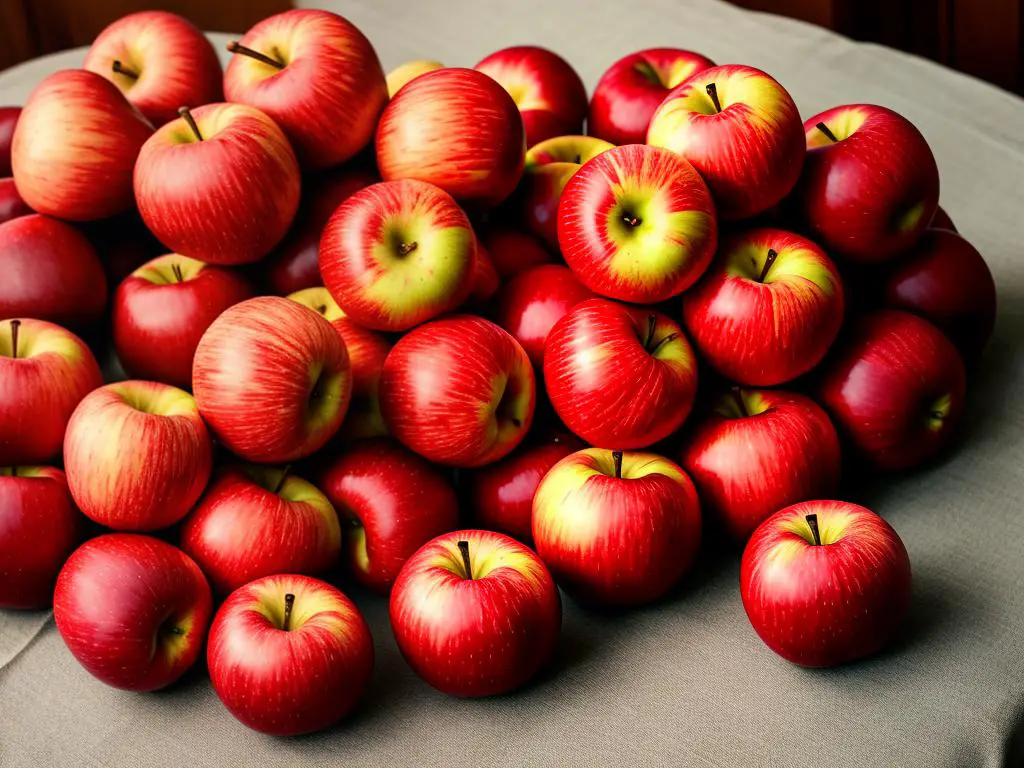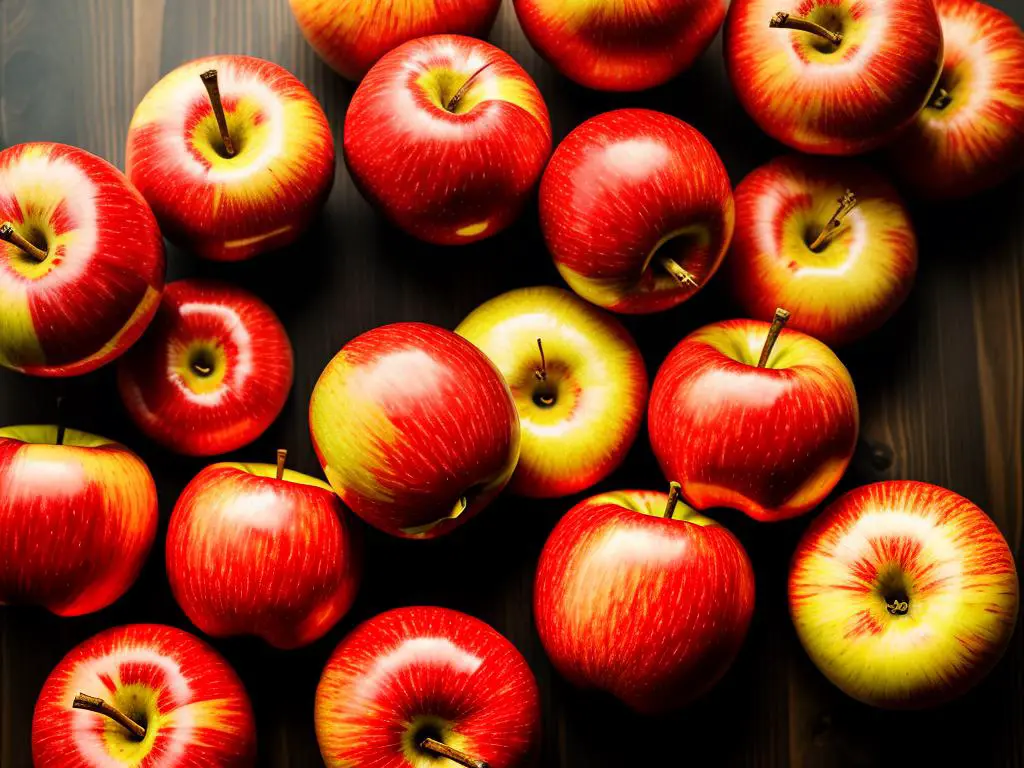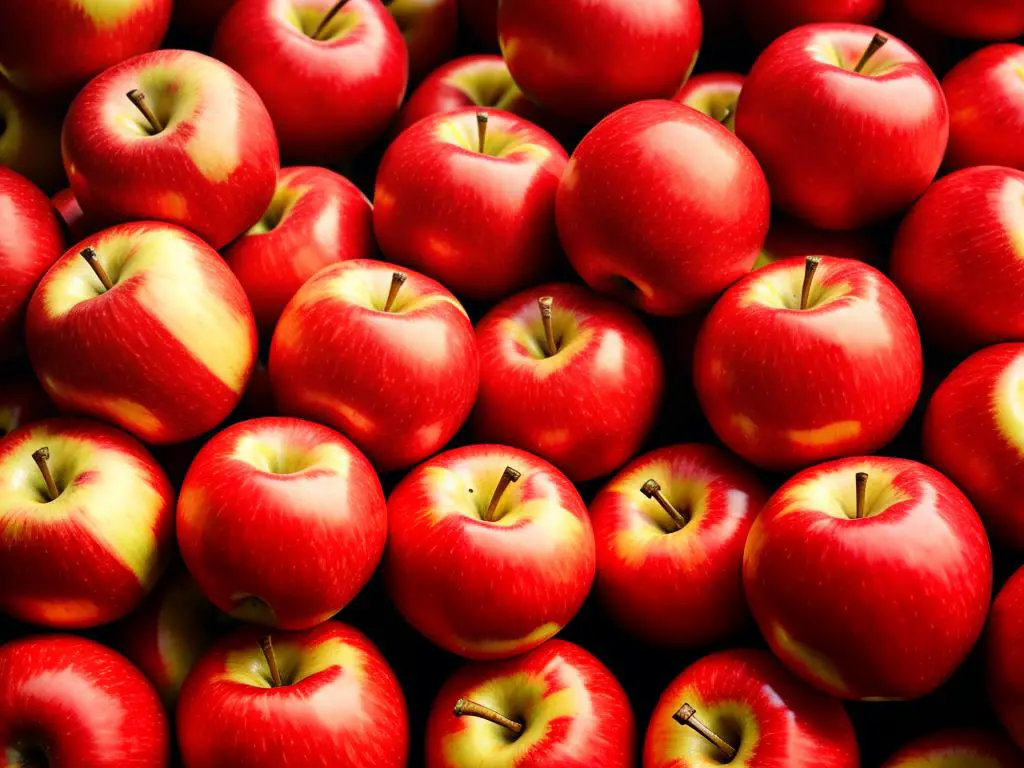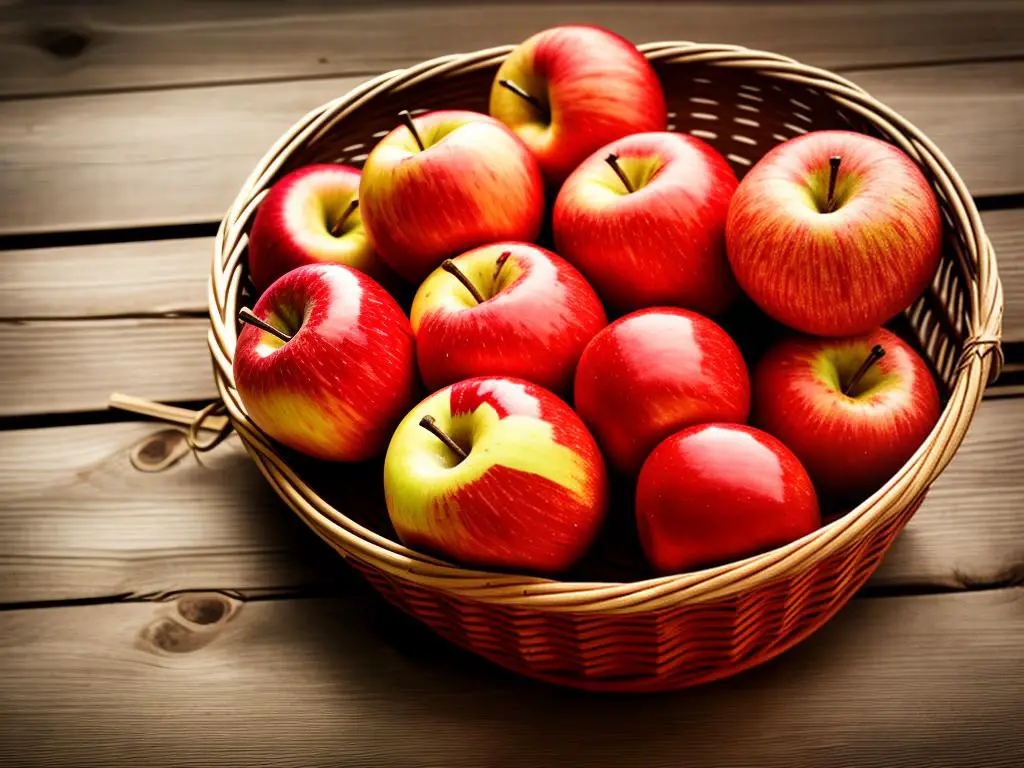Known for their extraordinary taste and uniqueness, Rome apples are a favorite amongst many fruit enthusiasts. Named after the city of Rome in Ohio, USA where they were first grown in 1816, these apples have a rich history that spans centuries. Captivating the agricultural world with their thick, glossy skins and robust structure, Rome apples have successfully etched their names in the annals of apple farming. In this essay, we will take a journey through the history of this stellar apple variety, uncover the distinctive features that define its physical and nutritional characteristics, explore the cultivation process, as well as delve into its culinary uses.
Origins and History of Rome Apples
Understanding the Legacy of Rome Apples
Rome apples, also called Rome Beauty Apples, are a significant part of America’s apple lineage. First grown in the Rome Township, Ohio in the early 1800s, Joel Gillet and his son Alanson discovered a seedling which they cultivated into the robust tree known today for producing the delectable red Rome apples. This led to the spread of the apple variety through Alanson’s propagation techniques.
Interestingly, hence unlike other apple varieties, Rome apples were a native discovery and didn’t require any method of importation. As such, they ultimately gained widespread acclaim for their robust size, attractive aesthetic, and exceptional cooking attributes.
This variety has had an indelible impact on the US farming and apple industries, primarily due to their inherent quality of maintaining their shape even when cooked. This characteristic trait heralded the Rome apple as a favored choice in baked goods and dishes, ensuring their commercial value throughout the 20th century. The vibrant red skin and uniquely round form of the apples further added to their appeal.
Nowadays, Rome apples are found in many US regions and farmers particularly value these apples for their disease-resistant nature and ability to thrive in varied soils, making them a particularly suitable pick for commercialized farming. The apples’ consistent size and quality have only raised their desirability amongst consumers, and their prominence in supermarkets and farmers’ markets is a testament to this.
Overall, the broad cultivation and endorsement of the Rome apple serves as a testament to its vital role in America’s farming heritage. This variety’s enduring popularity continues to pave the way for the exploration of new apple varieties, underlining the value of innovation and discovery in the world of fruit farming.

Characteristics and Features of Rome Apples
Savor the Dynamic Flavors of Rome Apples
Coined as the ‘Baker’s Buddy’, the Rome apple is a classic variety hailing from Ohio, USA. Both their striking, uniform-circular shape and a glossy, vividly red skin characterizes these apples. Typically, Rome apples are either medium to large in size, and on average, weigh between 150-200 grams.
What distinguishes Rome apples from other apple varieties is how their flavor profile transforms when cooked. They are known to increase in taste and sweetness once cooked, a quality that isn’t common in most apple varieties. Moreover, their bright red skin holds its color even after being cooked, adding an appetizing visual appeal to pies and other baked delights.
Aromatic and Satisfactory Nourishment On-the-go
The meaty pulp of Rome apples is creamy white with a slightly crunchy texture. These apples offer a mildly sweet and faintly tart flavor, often described as agreeably subdued. Beneath the skin, the flesh is dense yet soft and envelops a central core encasing several small, black-brown seeds. Rome apples tend to have a less juicy texture compared to other apple varieties, making them less messy to eat on-the-go.
Rome apples contain a fair amount of Vitamin C and A, and dietary fiber. They are low in calories and high in water content, making them a hydrating and filling snack.
Comparative Advantage of Rome Apples
As compared to other apple varieties such as Honeycrisp or Golden Delicious, Rome apples hold their shape excellently during cooking and baking. This makes them ideal for dishes like pies, tarts, and baked apples. They can also be used in sauces, cider or preserves.
Rome apples have firm flesh that does not break down when exposed to heat, unlike many other apple varieties. They are perfect for making apple dumplings since they will hold their shape while the dumpling bakes.
Getting to Know Rome Apples
Rome apples, cherished by apple enthusiasts nationwide, are known for their resistance to bruising and spoilage, impressive storage capabilities, and long shelf-life when stored under appropriate conditions. Harvested from late September through October, this apple cultivar is widely produced across the United States, and can be found in grocery stores especially during fall and winter.
Rome apples are both visually attractive and delicious to taste, offering a delightful blend of flavor and nutritious content. The versatility of these apples makes them a perfect addition to numerous culinary recipes from desserts to beverages.

Growing and Harvesting Rome Apples
Characteristics and Culinary Use of Rome Apples
Also known as Rome Beauty apples, the standout feature of Rome apples is their striking bright red exterior. This type originated in Ohio in the early 19th century. Size wise, they are medium to large, featuring a glossy skin that varies in color from deep red to purple. Inside, a dense and mildly sweet greenish-yellow pulp awaits apple lovers.
Their unique flavor profile, which is hearty and slightly tart, transforms into a richer, sweeter note when cooked. Rome apples, known for maintaining their shape even when baked, are ideal for multiple culinary preparations. This includes making cider, sauces, baking pies, and eating as a healthy snack on the go.
Growing Rome Apples: Ideal Soil and Climate Conditions
Rome apples, like most other apple varieties, thrive in locations where the summers are moderately cool and the winters are cold. They need a pronounced seasonal temperature variation for proper growth. The trees grow well in full sun exposure and require at least six hours of direct sunlight each day.
Optimum soil for apple trees should be well-drained. The trees can tolerate a variety of soil types including sandy, loamy, and clay, as long as the soil has good water drainage. The tree prefers slightly acidic pH levels, with ideal soil pH between 6.0 and 7.0.
Rome apple trees are typically grown from grafted seedlings for their efficiency and high-quality produce. The seedlings should be planted in the early spring, about six weeks before the last expected frost.
Harvesting Rome Apples: Tips and Techniques
Rome apples are usually ready for harvest in mid to late October. However, depending on the local climate, the picking season might vary. It’s best to hand-pick apples gently to avoid bruising the fruit, as this can affect storage quality.
To know when Rome apples are ripe for picking, look for a deep, full color. The primary indication is how easily they come off the tree. A ripened apple releases from the tree when it is lifted and given a slight twist.
After harvesting, the apples should be stored in a cool, dark place such as a cellar or refrigerator. With proper storage, Rome apples can last for several weeks, making them a favored variety for winter storage.
Managing Pests and Disease
Like their apple counterparts, Rome apples, also known as Rome Beauties, are susceptible to a variety of common pests and diseases. Regular check-ups, pruning, and the timely use of suitable sprays are required to sustain robust trees and high-grade fruits. They are often threatened by pests like codling moths and aphids, along with diseases such as apple scab and fire blight.

The Uses of Rome Apples in Cooking
Culinary Uses of Rome Apples: A Multifaceted Essential Ingredient
Rome apples, also referred to as Rome Beauties, are a vibrant red apple variant heavily utilized in numerous kitchen creations. This variety, named after Rome Township in Ohio where they originated, are celebrated for their adaptability in various cooking and baking processes. This is largely due to their subtly sour flavor and sturdy texture, important attributes that remain intact even when cooked.
Deserts and Pies
The discussion of Rome apples would be incomplete without highlighting their extraordinary contribution to pies and deserts. With their ability to withstand high cooking temperatures while maintaining shape, Rome apples have become a mainstay in traditional apple pies. The slow juice release, along with their unwavering firm texture, results in a pie that offers both visual allure and delightful flavor.
With their robust, sweet-tart taste, Rome apples are also a preferred choice for apple strudels, cakes, tarts, and cobblers, able to offset the rich, sweet elements of many deserts seamlessly.
Main Dishes and Sides
Moving away from desserts, these apples have often found their way into savory dishes as well. The unique tartness of Rome apples complements hearty main dishes such as pork roasts. Baked with herbs and spices, a bed of Rome apples lends a sweet and savory base that deliciously offsets the strong, meaty flavors.
The list of side dishes where Rome apples shine is extensive. Whether roasted, baked, or sautéed, Rome apples can be sliced or chunked to accompany a variety of meats, tossed in salads, or even cooked into a chunky applesauce as a side to curry dishes.
Smoothies and Juices
Due to their dense texture, Rome apples can also be used in beverages like smoothies and juices. Blended or juiced along with other fruits, they provide ample natural sweetness and a burst of fruity flavor.
Health Benefits of Rome Apples
Last but not least, Rome apples offer nutritional benefits. Like other apple varieties, Rome apples are low in calories and contain no saturated fats. They are high in dietary fiber, which aids digestive health, and they are a good source of Vitamin C. Vitamin C is a potent antioxidant that helps protect the body against harmful free radicals. Plus, the natural sugars in Rome apples offer a healthier sweet option as compared to processed and refined sugars.
Every dessert or dish made with Rome apples not only satisfies the taste buds but also nurtures health, making Rome apples a genuine win-win option in the culinary world.

Indeed, Rome apples are more than just bite-size treats. They are the embodiment of a rich heritage, painstaking cultivation, and culinary versatility. From stewed dessert dishes to apple cider and roasts, these apples offer a unique point of difference in both household and commercial kitchens. Their juicy, slightly tart flavor profile makes them a star ingredient in various dishes, proving that these apples are not just beneficial to agriculture, but also foundational in many cooking exploits. Ready to savor the taste of Rome apples? Remember, every bite is a testament to a remarkable history, a rigorous growing process, and an unforgettable taste.